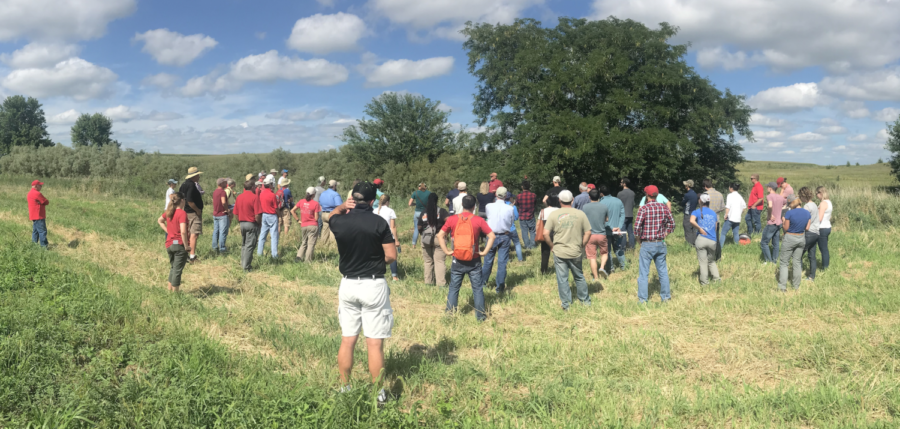Iowa Nutrient Research Center announced new projects and research into agricultural practices
September 16, 2021
The Iowa Nutrient Research Center recently announced its plans for the yearly funding it receives from the Ag Management Fund. The $1.4 million of annual funding is to be split to help support projects that have already been established as well as some new projects.
The Iowa Nutrient Research Center (INRC) was established in 2013 by the Iowa Legislature, the center is shared between Iowa’s three regent universities. Principle Investigators from any of the three universities lead a project while collaborating with partners throughout the state.
The INRC conducts research through four main categories: Nutrient Management, Land Management, Multi-objective, and Edge of Field research. The director of the INRC, Matthew Helmers explained some of the projects under each field.
“A couple of the projects are continuing to look at cover crops, so a practice that we can implement within our corn, soybean cropping system to try to take up nutrients and water during the fallow time of the year,” said Helmers. “So looking at ways to best implement that and understand where there could be some concerns with cover crops and help farmers with how they might manage that from a nutrient standpoint.”
Nutrient Management has to do with conserving the limited amount of nutrients in the soil and working to improve practices to be more efficient with these nutrients.
These projects can help farmers to be smarter with their crops and to cause less strain on the environment.
“We also have some work looking at manure management and optimization of manure usage to try and get the most value from that manure and to minimize the environmental impact,” said Helmers.
Little of this year’s funding has gone towards land management, but in past years the INRC has worked to develop cover crops and other practices to help prevent things like nitrogen loss due to runoff. One project that falls close to Land Management has stirred up some excitement in the INRC.
“Kind of under the Multi-Objective areas, we do have a new project looking at the linkage, or how some of the practices that might reduce carbon loss might also reduce nutrient loss,” said Helmers. “There’s a lot more interest in carbon capture and carbon sequestration from our agricultural lands, so we want to learn how some of those practices also help us with nutrient loss.”
Another field the INRC has funneled some funding into is Edge of Field studies. These projects focus on developing different practices to improve different aspects of agriculture.
“One project is looking at a practice that’s being adopted more and more, wood chip bio-reactors for denitrification, to remove the nitrate before it reaches the stream,” said Helmers. “Michelle Soupir is asking, can we use corn cobs in part in those trenches rather than just wood chips? That Might be a source with a lower cost of carbon than wood chips, and in some areas, they might be more available.”
Other projects in this category look to redesign grass waterways to improve denitrification in crop systems.
We might be having the water that would be high in nitrate interact with carbon-rich soil, then promote the biological process of conversion of the nitrate in that water into primarily dinitrogen gas,” said Helmers. “So we’d convert it from something that’s a water quality concern into primarily an inert gas form.”
The last area of research is Multi-Objective, this category has to do with the implementation of a lot of the other projects that the INRC has been working on through the years.
















